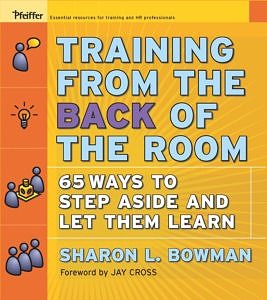“How Is Your Phone Changing You?” by ASAP Science

Most days I walk – sometimes a short walk around the tree-lined block, other times a mile or two along a lovely meadow. I take my mobile phone with me to track my steps and mileage. But, while walking, I find myself doing other things with the phone, as well.
I will stop and check email. I will call a friend (telling myself I’m multi-tasking, which is to say, dividing my attention between walking and talking). I will check my email – again. And, while at it, I also check the steps and mileage, even though I haven’t finished my walk yet.
It’s distracting, having the phone with me. It becomes difficult to focus on the natural beauty around me; rather, my mind races along a different path, one that is attached to all the things I do with the phone.
I think that it’s important to acknowledge the subtle but powerful addiction most of us have to the constant use of our mobile devices, both in our personal and professional lives. Awareness is the first step towards making a positive change. Once we become aware of how much of our time and attention is sidetracked by “screen-time,” we can begin to “unplug.”
We can also help those we teach and train unplug, as well, especially when we’re in a face-to-face learning experience: a class, training, workshop, or a presentation. Whenever we’re instructing others, we can build into the instruction lots of “face-time” rather than “screen-time” (and yes, slides count as “screen-time”) by connecting learners to learners in active, interesting ways.
But first, let’s learn a bit about what happens to the human brain and body when screen-time supersedes face-time (note: to view this short video in full screen – how ironic is that! – click on the “play” arrow in the middle of the screen and then on the square icon in the lower right corner of the screen):
“How Is Your Phone Changing You?” by ASAP Science
Based on this video, I thought of a couple of ways you and I can begin to unplug in our personal lives, and some suggestions for helping participants unplug during a class or training:
 Personal Life:
Personal Life:
1. When doing something else (walking, driving, eating, resting, visiting with family/friends), leave the phone stashed somewhere (a pocket, purse, phone dock) and make a promise to yourself to leave it untouched until the activity is over. Better yet, turn it off, or leave it on mute, for the duration of the activity.
2. Schedule some “unplugged” time into your daily life. That really means to unplug from ALL screens – phone, computer, laptop, tablet, television – for a specific duration of time, say, one hour to begin with. It could be a “decompress” hour right after work, a dinner hour with family, or a relaxation hour before bedtime.
What to do during the non-screen-time? Talk to family members about their day, read, write in a journal (like the “Morning Pages” idea in The Artist’s Way by Julia Cameron), walk, meditate, practice a musical instrument, or just relax and daydream.
Professional Life (while instructing others):
1. Suggest that participants turn off their phones and laptops and explain the brain-based reasons for doing so.
If they HAVE to keep the phone turned on, suggest that they put it in “vibrate mode” and step out of the room if they need to answer a call so that they don’t interrupt the learning.
2. Encourage participants to take notes on self-created “Graphic Organizers” rather than on their laptops (see the article Nifty Notes: Involving Learners with Graphic Organizers and the blog post First Think It, Then Ink It). Explain that there is new scientific evidence for doing this. The new neuroscientific studies indicate that handwriting (taking notes via writing versus typing), significantly increases retention of content:
“A Learning Secret: Don’t Take Notes with a Laptop”
by Scientific American
3. Build in lots of “face-time” – short, quick activities in which participants actively engage in content-related discussions: Pair-Shares, Teach-Backs, Stand-Stretch-Speak, small table group discussions, standing groups, wall charts, and whole group discussions. For more ways to do this (and for a free give-away), read the blog post 3 Ways to Engage ALL Audiences (No Matter What Your Content Is) and view the micro-course “Movement Trumps Sitting” under the tab Sharon’s Micro-Courses. You can also view Jimmy Janlen’s excellent slide presentation Move! Don’t. Sit. Still for more ideas.
A final reminder, both for our personal and professional lives: Easy does it! One tiny change at a time is just fine. That’s the way we form any new habit, and we need to give ourselves a pat-on-the-back for our daily efforts, however small they may seem to us. So “get tiny,” try something out, and reward yourself for it (but not with screen-time!).
**************************

For more brain-based training and teaching strategies, consider joining me in San Diego for my 2-day informative and highly-interactive Training from the BACK of the Room class on April 6th-7th 2017, and for The Trainer Certification Course on April 8th 2017. The classes are sponsored by The Brain Trust Consulting Group and early-bird registration discounts are available. For more information about both classes, click HERE. Hope to see you in San Diego! 🙂